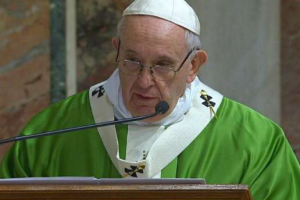Having named 13 new members of the College of Cardinals, Pope Francis will—as of October 5—have named a majority of the cardinals who will elect the next Roman Pontiff. At least on paper, then, he has had a chance to ensure that the next conclave will elect a prelate who shares his vision for the Church.
The numbers, by themselves, mean very little. Pope John Paul II appointed 231 cardinals: more than enough to constitute a super-majority in the next conclave. But he sought authentic diversity in the College, and he conferred many red hats on prelates who would differ with his pastoral approach: Cardinals Bernardin, Danneels, Laghi, Martini, Mahony, Silvestrini, Turkson, and—in the remarkable consistory of 2001—Kasper, McCarrick, Maradiaga, Hummes, Lehmann, and Bergoglio, now known as Francis.
In naming the cardinals who will be his advisers and will choose his successor, Pope Francis has taken a different approach. Father Adolfo Nicolas, the former worldwide leader of the Jesuit order, reported that Pope Francis once told him that he hoped to remain as Pontiff until “the changes are irreversible.” Packing the College of Cardinals with like-minded electors is an obvious step in that direction.
The liberal Jesuit columnist, Father Thomas Reese, wrote in 2016 that the Pope’s selections to the College were “the most revolutionary thing Francis has done in terms of Church governance.” He admitted that if he were a conservative Catholic, looking at the Pope’s selections, “Frankly, I would have been outraged.”
Now, two consistories later, the pattern is even more unmistakable. In his analysis of the Pope’s choices, John Allen of Crux underlines the salient point… Read more>>



You must be logged in to post a comment.